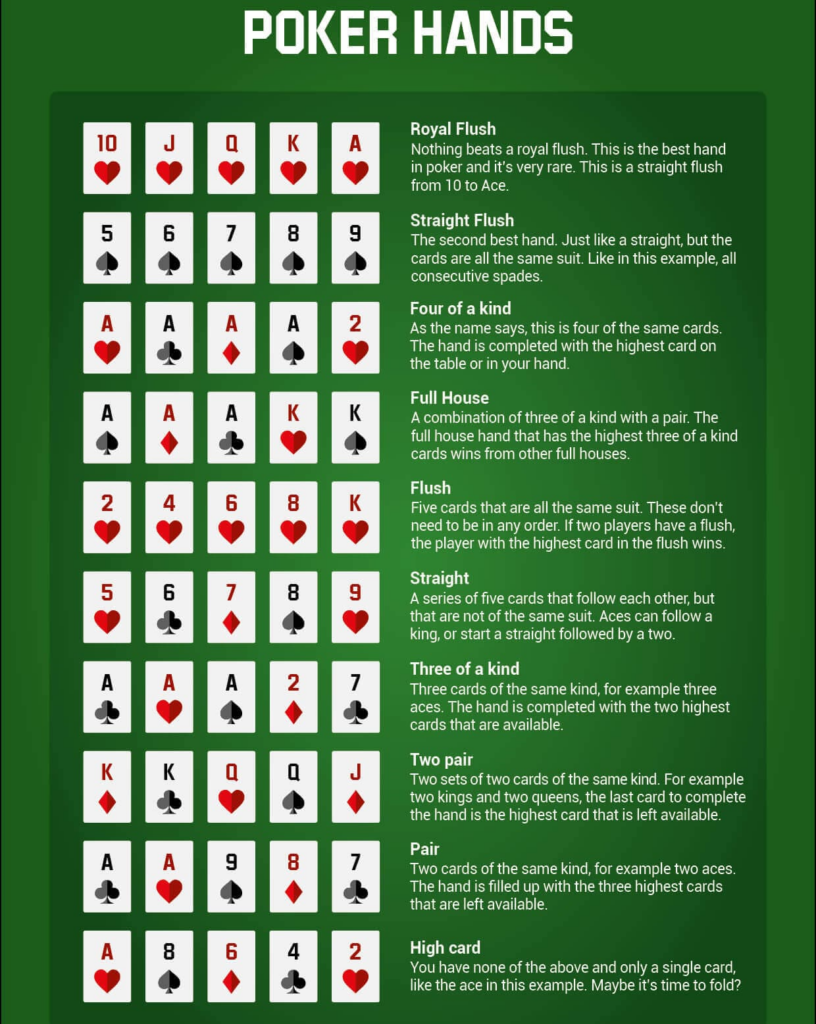All-in Poker Rules

In poker, when should you go all-in? It’s challenging to respond to this question, despite it being a common one. After all, it shouldn’t be easy to risk everything. The phrase “all-in” transcends poker because there are so many different methods to place our chips in the centre. We’ll talk about some overarching general ideas and then look at a few more particular examples. Poker, of course
Let’s clarify a few of all in rules poker that pertain to all-in situations.
All-in Poker Rules:
Rule #1 – Table Stakes
A player cannot be compelled to wager more than what he has brought to the table. In the past, it might have been feasible for wealthy players to intimidate less wealthy players by placing bets that were so big that no one could call, even if they wanted to. A player who is already wealthy would have been considerably richer had they chosen not to call. Nowadays, we still have the choice to call if our opponent shoves in for $1,000 when we only have $50 remaining in our stack. Even if we only stand to gain $50 from our opponent’s stack, he can no longer force us to fold by betting a sum that we are unable to call with our current chip stack.
Rule #2 – Side Pots
Only in multi-way situations where one player is all-in and the other players are competing for more chips do side pots emerge. Imagine a three-way all-in between the players listed below.
Player A – $25 stack
Player B – $100 stack
Player C – $200 stack
First of all, keep in mind that Player C can only ever wager $100 on this hand. Nobody has enough chips to play for the remaining $100 with him. In an online setting, he can still throw all $200 into the mix, but the extra $100 is pointless and won’t have any bearing on the outcome.
With only a $25 investment, Player A is only eligible to get $25 from each of his opponents’ stacks. Any wagers placed more than this will be included in a side pot.
Imagine player A has the best hand, player B has the second-best hand, and player C has the worst hand to demonstrate how this works.
Player A – AdAs
Player B – KdKs
Player C – QdQs
If we disregard player C’s additional $100 in chips, there are $225 in the centre. The main pot is $75 ($25 from each player). Only player B or player C can win the side pot, which is made up of the remaining $150 ($75 each from player B and player C).
Player A wins the $75 main pot because he has the best hand.
Player B loses to Player A in the main pot, but he wins the $150 side pot versus Player C. The only thing Player C receives is his additional $100 back.
When You Want to Put Pressure on Tournament Short Stacks
When you have one of the large stacks in the closing stages of a tournament, you are in a dominant position. The smaller stacks might be keeping an eye out for busts from other players to climb the payout ladder.
When the smaller stacks are behind you, you can go all-in with a broad range as a huge stack. If players are using the best ICM strategy, they will be compelled to fold more frequently as money spikes in a tournament increase bigger.